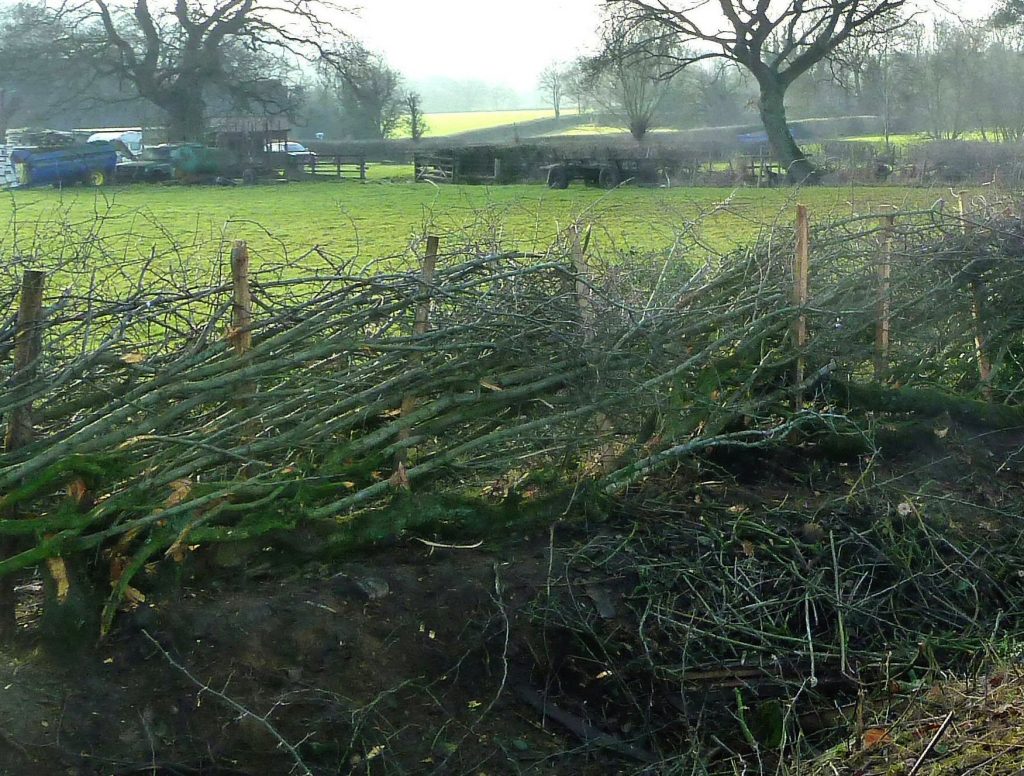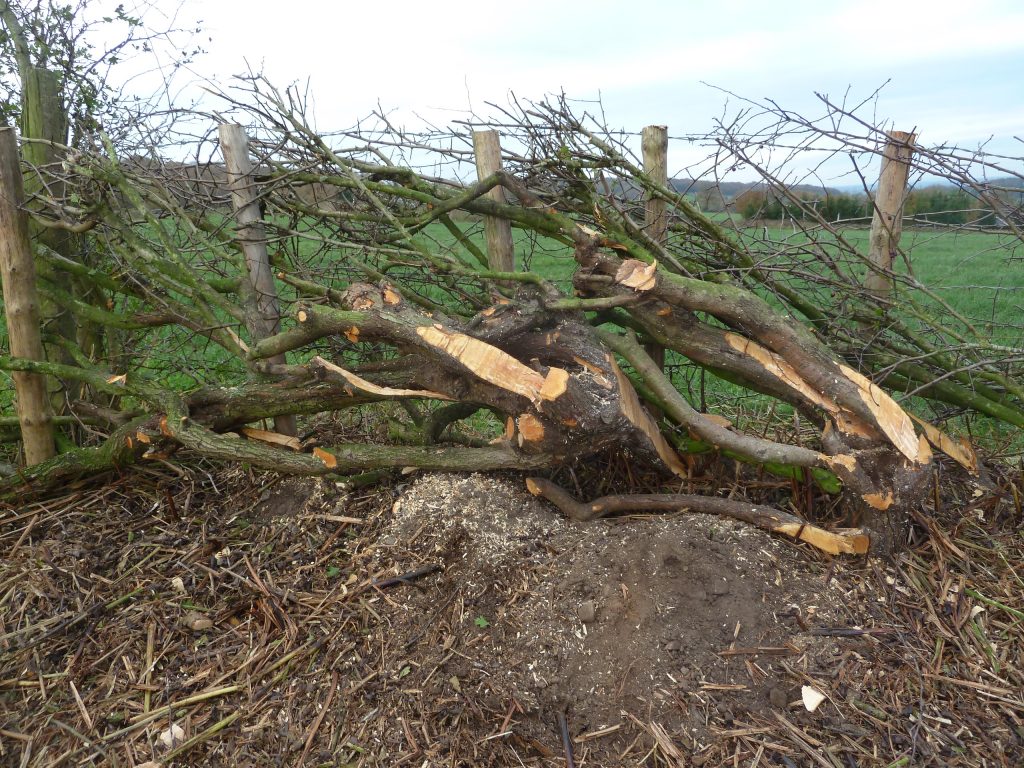
History and origins
The origins of hedgelaying can be traced back many thousands of years when nomads laid hedges to temporarily fence in their stock while moving around.These methods were adopted permanently on establishing settled communities.
Modern hedgelaying
Modern hedgelaying as we know it today arrived as recently as the 1700’s enclosure acts where each landowner was given a portion of land which they had to enclose with hedges and walls. The hedges had to be laid to prevent the stock (sheep and cattle) from escaping.
Basically the stem is cut about 4/5 of the way through and then laid over at an angle of about 30 degrees from the ground, the cut being about 3 or 4 inches from the ground. These stems are then woven between stakes which are hammered in every 600mm or so.
The stems will continue to live and grow and will be a strong,living barrier which will remain stock proof for many many years and will prove cheaper than fencing.

The hedge can be laid again after about 12-15 years after which it may not need to be laid again for another 50 years! In this way a well laid hedge will work out a lot cheaper than wire fencing which will need replacing every 7 years whereas a hedge will only require an annual trim.
Hedges are excellent habitats for wildlife and they provide shelter for farm stock and prevent wind from blowing top soil away. Many farmers and landowners are replanting hedgerows to conserve the British countryside and replace hedges lost through neglect and there have been grants and stewardship schemes to conserve and replace hedges,some of which are still in place.
I am a registered contractor on the National Hedge Laying Society website and you can contact me for more information.